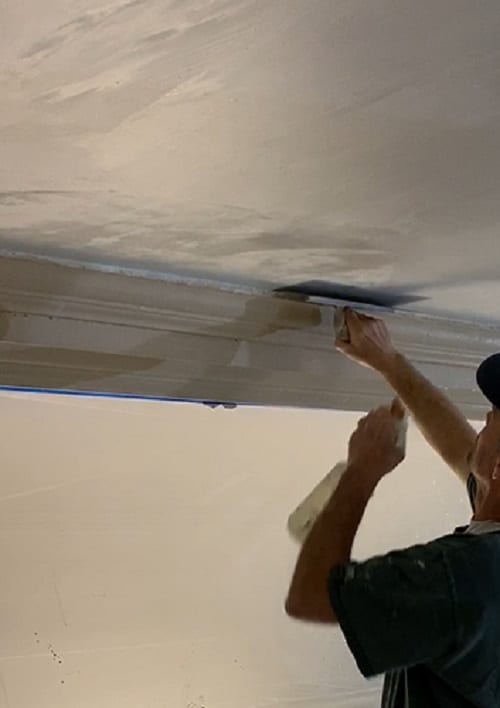Exterior Plastering: Protect and Beautify Your Home with Know-how
Exterior Plastering: Protect and Beautify Your Home with Know-how
Blog Article
A Comprehensive Overview to Mastering Plastering Abilities for Your Remodelling Needs

Vital Devices and Materials
In the world of plastering, having the right tools and materials is critical to achieving a flawless surface. Numerous important tools offer distinct purposes, making certain performance and accuracy throughout the smudging process. A top notch trowel, as an example, is important for smoothing and applying plaster, while a hawk gives a stable system for holding the material. A joint knife is also essential for thorough work, especially in edges and sides.
In enhancement to tools, picking the right plastering products is important. Gypsum-based plasters are commonly favored for their convenience and convenience of use, while cement-based choices are suitable for outside applications as a result of their longevity. Water and bonding agents play considerable roles in achieving proper consistency and bond, guaranteeing that the plaster sticks effectively to the surface.
In addition, protective gear such as handwear covers, masks, and safety glasses is essential to protect against dust and inflammation throughout the application procedure. By assembling the right mix of materials and devices, plasterers can enhance their ability and generate top notch coatings, inevitably raising the overall craftsmanship of their work.
Preparing Surface Areas for Smudging
Achieving a smooth and resilient plaster surface starts with precise prep work of the surface areas to be glued. This fundamental step is crucial to making certain bond and the long life of the plaster. Beginning by examining the problem of the substratum-- whether it is stonework, drywall, or concrete-- removing any kind of loosened paint, dust, or particles that may interfere with bonding.
Next, repair any kind of blemishes such as openings or fractures. Make use of an ideal filler to attain a level surface area; this can be essential for stopping future issues. Once repaired, ensure the surface area is completely dry and tidy, as wetness can compromise plaster adherence.
For permeable surface areas, it is advisable to use a bonding representative. This product improves bond and produces a dependable interface between the plaster and substratum. If collaborating with formerly plastered surface areas, it might be essential to mess up or sand the location gently to provide a key for the brand-new plaster layer.
Plastering Techniques and Tips
Understanding smudging methods requires both skill and practice to attain a remarkable coating. One essential method is the application of the plaster in numerous slim layers, instead than a single thick layer.
When using the finish layer, utilize a troweling technique that entails holding the trowel at a small angle and functioning in a circular motion. This aids to produce a smooth surface and minimizes the look of trowel marks. Additionally, keep a spray bottle of water convenient to haze the surface gently; this maintains the plaster practical and enables smoother ending up.
Timing is important; job effectively, as the plaster starts to set. Once the plaster has actually firmed up but is still damp, use a wet sponge to gently smooth the surface even more. Lastly, permit appropriate drying out time prior to sanding or painting, ensuring your hard job results in a specialist, premium coating.
Usual Errors to Stay Clear Of

Another typical error is applying plaster also thickly. Overzealous applications can result in splitting and prolonged drying times. It's important to use plaster in thin, even layers, enabling each layer to completely dry sufficiently prior to including extra.
In addition, not utilizing the right devices can impede the top quality of the surface. Making use of unacceptable trowels or mixers can develop inconsistencies in the plastering view it procedure. Always choose for high-quality devices developed for gluing tasks.
Last but not least, Visit Your URL numerous individuals take too lightly the relevance of timing. Operating in improper temperatures or humidity levels can negatively affect plaster drying and curing. It is suggested to check climate condition and adapt your timetable accordingly.
Finishing Touches for an Expert Look
The final phases of a plastering task are vital for accomplishing a sleek, professional appearance. Once the plaster has dried out completely, the next step is to assess the surface for blemishes.
After sanding, it's suggested to cleanse the surface to remove any kind of dust and debris. A damp towel works for this objective, complied with by a comprehensive drying out period. If essential, applying a thin layer of ending up plaster can enhance the surface even more, giving a seamless surface.
As soon as the ending up plaster is dry, one more round of sanding might be called for to achieve the desired level of smoothness. Ultimately, think about applying a primer before paint or wallpapering, which will certainly enhance attachment and durability.
Verdict
Understanding plastering skills substantially improves the top quality of renovation projects. A detailed understanding of essential devices, surface prep work, and reliable techniques is important for attaining professional outcomes.
Water and bonding agents play considerable duties in accomplishing appropriate consistency and attachment, making sure that the plaster sticks effectively to the surface area. you could try here Plastering.


Additionally, maintain a spray bottle of water convenient to haze the surface gently; this keeps the plaster convenient and enables for smoother completing. (Plastering)
If needed, applying a slim layer of completing plaster can enhance the surface area even more, providing a seamless coating.
Report this page